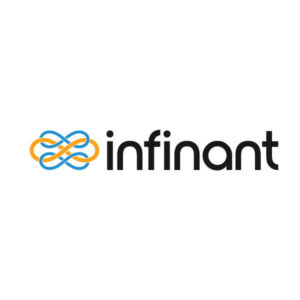 A Q&A with NGINX co-founder Andrey Alexeev. The company, which offers products based on the open-source platform of the same name, was founded in July of this year.
A Q&A with NGINX co-founder Andrey Alexeev. The company, which offers products based on the open-source platform of the same name, was founded in July of this year.
SUB: Please explain what NGINX is, and the value proposition you bring to market.
Alexeev: NGINX is an advanced web infrastructure pltform. NGINX provides the essential set of features required to build modern and highly efficient online services. The software has been a free, open source product since 2004, when it was first launched to the public. NGINX is mostly known as an extremely high performance web server and a reverse proxy. However, it can also be used as a Layer 7 load balancer, caching engine, HTTP streaming server, SSL accelerator, mail proxy and a security gateway for back-end applications. The value NGINX brings is in efficiency, performance, scalability and reliability, as well as optimized costs of development, deployment and operations for either large-scale or smaller web installations.
SUB: How does the technology behind NGINX work?
Alexeev: NGINX was developed in the 2000s, so it followed a different approach in its architecture. It is event-based, asynchronous, non-blocking core architecture and has a number of functional modules that you can enable or disable. NGINX was also created to take lots of connections in a single process versus spawning a separate process or thread for individual connections.
It is also written in the way to enable full performance of the underlying operating system and hardware. It is not trying to outthink the OS like the software that was written before it, which often attempted to resolve some legacy historical limitations of the OS kernels and hardware. Since then, operating systems have evolved dramatically. There are a number of useful mechanisms to employ, such as event notifications and asynchronous disk input/output. NGINX blends perfectly with the modern OS and server hardware to allow the most efficient operations. Last but not least, NGINX’s configuration was carefully designed to be ultimately scalable and clean, which is what many system administrators truly appreciate.
SUB: Who do you consider to be your competition?
Alexeev: In general, we’re very often an integral part of the entire ecosystem of open source products, enabling the growth and development of the services of the modern Internet. There are products in this market that provide subsets of similar capabilities and have comparable characteristics. We do not really want to engage in discussions about the competition; we reject anything that resembles a “holy war” approach to competing in the marketplace. We’ve always acknowledged the tremendous efforts of the other open source developers who produced amazing products like Apache, HAProxy and Varnish, and we wish these products the success they deserve.
However, NGINX is probably the only platform so far to provide this lean set of features that companies can really use in practice to enhance performance and flexibility. NGINX is capable of improving the performance of a company’s existing hardware tenfold, and it also allows users to get the most out of modern operating systems. NGINX was always meant to be the right tool for the right job, and many people have found it incredibly useful, whether it functions as software-to-the-rescue to solve long-standing performance and scalability issues—primarily at the front-end layer of the setup—or, the next logical step, towards a modern front-end and back-end web infrastructure for online media and entertainment, CDN, hosting, cloud and even enterprise applications.
SUB: What do you offer that differentiates NGINX from the competition?
Alexeev: We think it’s primarily the uniquely designed combination of functions that customers may use either in a standalone mode or together for ultra-efficient utilization of hardware and software infrastructure. NGINX is a true lean software product; it has pretty much everything that’s needed for an online service to start and grow dynamically, and all of the NGINX features are implemented with optimal precision and effectiveness. It is also very compact web software, yet is capable of handling continuously increasing workloads without wasting server memory and CPU.
SUB: What was the inspiration behind NGINX? How did the idea develop into what it is today?
Alexeev: Igor Sysoev, who is the original author of NGINX and the main stakeholder in the company, was trying to overcome certain barriers he encountered in his efforts to scale the web infrastructure of a large online Russian media company, Rambler, which he was responsible for. Back then, no web server software was able to crack the so-called C10k problem—the handling of at least 10,000 concurrent connections. So Igor made an attempt to solve both practical and academic problems when he started to write NGINX. Eventually, it turned out to be one of the few successful implementations and the most popular one.
Igor opened NGINX to users in 2004, and many people soon jumped on the idea and started to use NGINX to scale their quickly growing web infrastructures. They were also actively providing the necessary feedback about their experiences with NGINX, reporting bugs, offering suggestions and requesting more functionality. So the help from the user community has been immense so far, and it’s something we really value a lot.
It was the dawn of a new era of ubiquitous social media, mobile applications, permanently connected and demanding users of all ages, and instantaneous communications. In a sense, Igor has implemented what has become a very important enabling mechanism for big and small companies worldwide. Today, NGINX is powering 4 out of 10 of the world’s most valuable startups (see the Business Insider 2011 Top 100 list), including Facebook, Groupon, LivingSocial and Dropbox. But it is also being run by 22 percent of the top 1,000 busiest websites, and overall by 43 million websites on the Internet.
SUB: When was the company founded, and what were the first steps you took in establishing it?
Alexeev: The company was founded in July 2011. There were lots of internal discussions and preparations that we took before launching the company. We all had full-time jobs as well, so it really wasn’t easy to step out and follow an entirely different direction in our careers. We then proceeded to talk to VC investors in the U.S., which eventually led to further negotiations and subsequent investment. We picked our VC funds based on their understanding of and interest towards a well-known and famous open source project, and we’re hoping to make it an even bigger success.
SUB: What have the most significant obstacles been so far to building NGINX?
Alexeev: Obviously it’s non-trivial software to develop. There are many technical obstacles with regard to how the NGINX core is architected, what kind of internal and external APIs are supported, how to enhance the functionality and remain a lean, compact software capable of delivering hundreds of thousands of concurrent connections and tens of thousands of requests per second on a single hardware server.
Probably the main obstacles were faced by the third-party developers who’ve been trying to make their own extensions to NGINX. Sadly, it’s mostly because of the lack of developer documentation—Igor just didn’t have enough spare time for working both on the NGINX code and writing developer’s documentation. Fortunately, this is now one of the priorities for the ongoing team work. We also hope to enable more opportunities in the future for third-party developers as they create open source and proprietary extensions to NGINX.
SUB: You recently raised $3 million in Series A funding. How do you plan to use the funds?
Alexeev: Basically, we’re focusing on two main directions. The first one, which is vitally important to us, is to continue to improve the open source product. We’ve been actively improving documentation, adding more features, integrating long-awaited improvements and fixing bugs in the couple of months since we became a company. We’re now hiring more developers and system engineers to help us streamline these processes even more.
So, I’d say we’re focusing intensely on the open source product now. Some of our users have expressed a certain level of concern about what the establishment of NGINX as a commercial entity means for them. We’d like them to know that both the company and the investors clearly understand the subtleties and dangers we face as we try to maintain a balance between making commercial products based on existing open source product and keeping the huge and loyal user community happy. We think that we can achieve a balance that would be really beneficial for both open source and commercial users of NGINX. We’re not going to stop adding exciting new features to NGINX under the 2-clause BSD license.
At the same time, as a commercial entity we’re obviously focusing as well on offering paid products based on NGINX. Based on ou
r conversations with commercial customers, we’ve determined the paid extensions will follow the real-world requests and demands of the businesses that need advanced performance, configuration and security management—for instance, the needs of the companies maintaining thousands of NGINX instances across numerous locations. There will be also features specific to the hosting and cloud service providers, providing them with more flexibility and automation in deploying and controlling their infrastructure, but also allowing more useful services for their clients. In our commercial spin-off we will also be actively establishing partnerships with the other ISVs and hardware vendors, as well as with the services providers in the U.S., Europe and Asia-Pacific.
SUB: Why was this a particularly good time to raise new funding?
Alexeev: NGINX is becoming more popular these days, and Igor was already a bit overwhelmed by the increasing user feedback with regard to new features. With the growing popularity of NGINX, it just became too problematic for a single person to fully and effectively maintain the project on his own. So Igor decided to form a company with the other two founders. We like to think we’ve already demonstrated how a commercial entity backing the project is beneficial to the overall progress of NGINX development. NGINX has always been a good and unique product, and we’d like to deliver more.
NGINX – www.nginx.com










